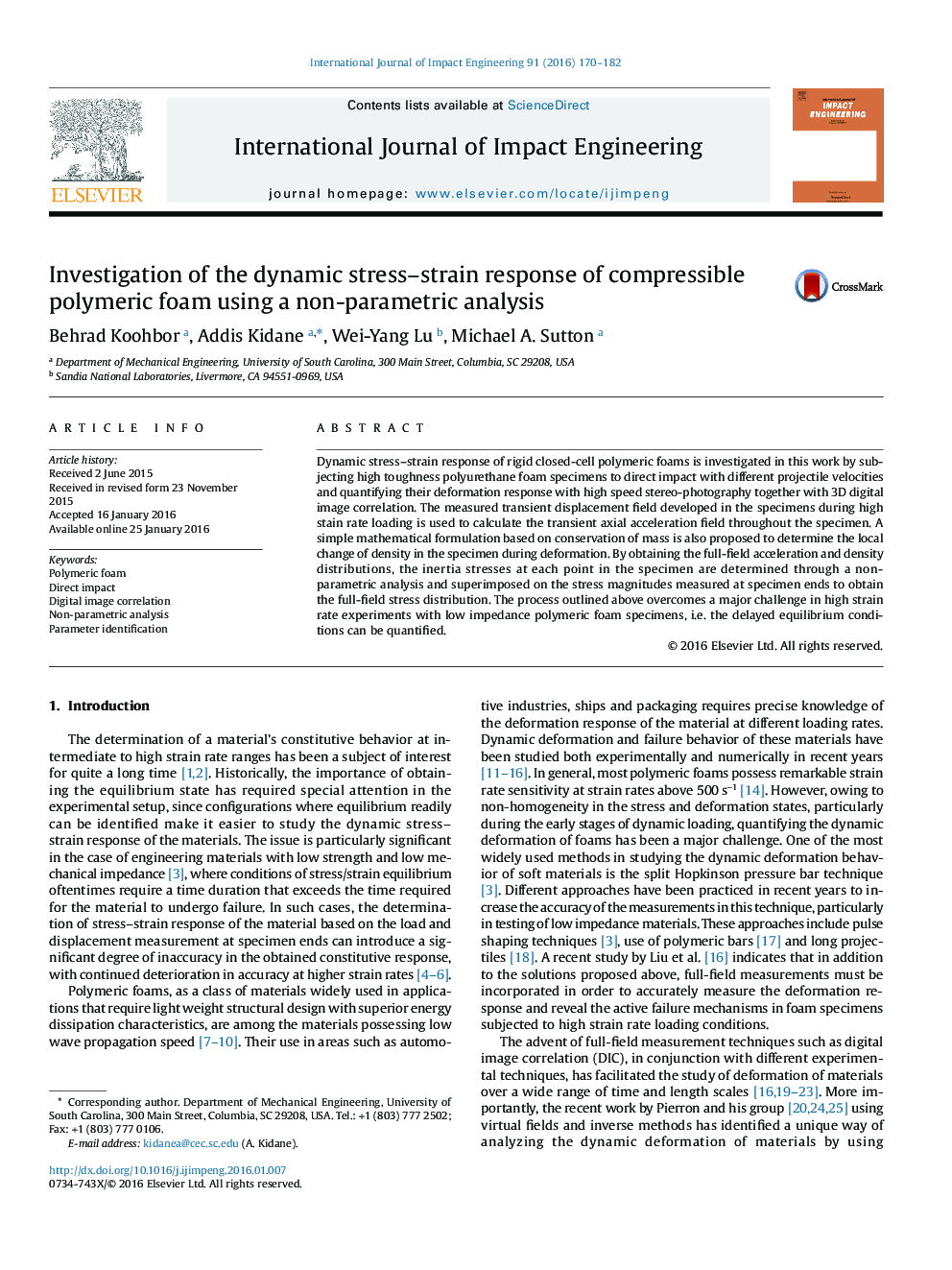| Article ID | Journal | Published Year | Pages | File Type |
|---|---|---|---|---|
| 782805 | International Journal of Impact Engineering | 2016 | 13 Pages |
•A non-parametric study is used to investigate the dynamic compressive properties of low impedance materials.•A simple model is proposed to determine the change in density in cellular materials subjected to dynamic loading.•The constitutive behavior is determined using 3D digital image correlation and a non-parametric method.•The traditional method is compared with the current method.•The limitations of the method and its future implications are discussed.
Dynamic stress–strain response of rigid closed-cell polymeric foams is investigated in this work by subjecting high toughness polyurethane foam specimens to direct impact with different projectile velocities and quantifying their deformation response with high speed stereo-photography together with 3D digital image correlation. The measured transient displacement field developed in the specimens during high stain rate loading is used to calculate the transient axial acceleration field throughout the specimen. A simple mathematical formulation based on conservation of mass is also proposed to determine the local change of density in the specimen during deformation. By obtaining the full-field acceleration and density distributions, the inertia stresses at each point in the specimen are determined through a non-parametric analysis and superimposed on the stress magnitudes measured at specimen ends to obtain the full-field stress distribution. The process outlined above overcomes a major challenge in high strain rate experiments with low impedance polymeric foam specimens, i.e. the delayed equilibrium conditions can be quantified.
